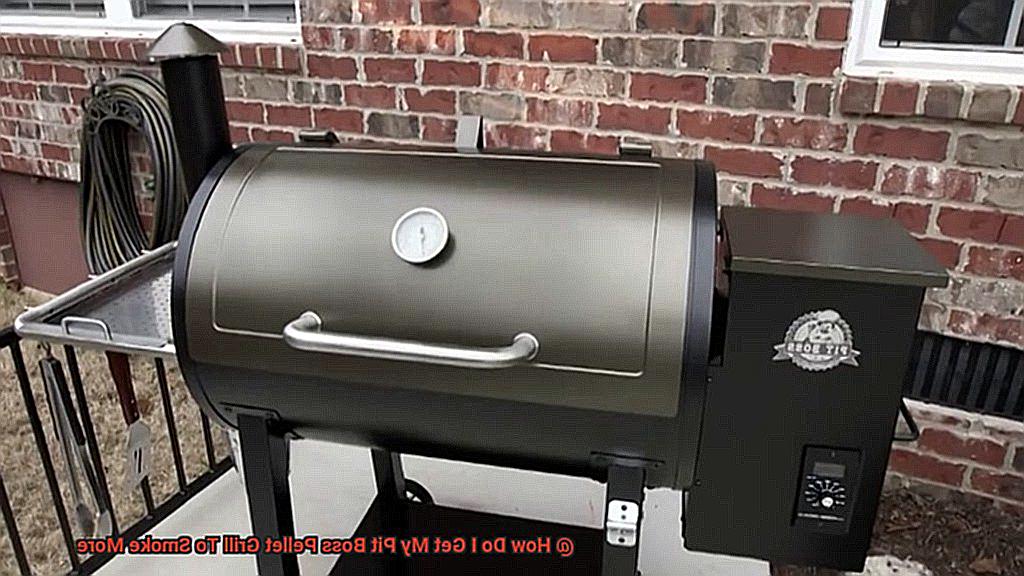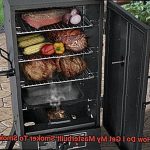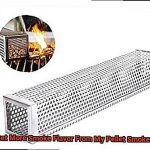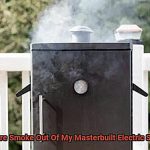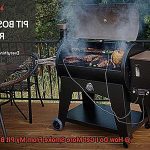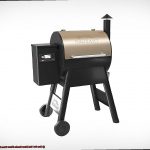Hey there, Pit Boss pellet grill lovers. Do you ever find yourself staring at your grill, wondering how to get that perfect smoky flavor? You know, the kind that makes your mouth water and your taste buds tingle?
Well, fear not my friends. We’ve got you covered with some top-notch tips and tricks that will take your smoking game to a whole new level. Whether you’re a seasoned pro or just starting out, we’ve got something for everyone.
We’ll cover everything from selecting the right wood pellets to adjusting temperature settings for optimal smoke output. And if you’re feeling adventurous, we’ve even included some mouth-watering recipes for you to try out.
Imagine impressing your guests with the most delicious smoked meats they’ve ever tasted. With our guide, you’ll be well on your way to becoming a true pit master.
So, what are you waiting for? Let’s dive in and discover how to get your Pit Boss pellet grill smoking like a pro.
Contents
Quality of Pellets: What to Look for in High-Quality Wood Pellets
The secret is in the wood pellets you use for your Pit Boss pellet grill. Here are five things to look for when shopping for high-quality wood pellets:
All Hardwood, No Fillers
The first thing to look for is 100% hardwood pellets without any fillers or binders. These pellets produce more smoke and have a distinct flavor profile that complements your food well. Make sure to avoid pellets with additives that can affect the quality of smoke produced and damage your grill.
Optimal Moisture Content
Pay attention to the moisture content of the wood pellets before buying them. Look for pellets with a moisture content of 6-8% as it is optimal for producing consistent smoke output and a clean burn. Pellets that are too dry may burn too fast and produce less smoke, while those that are too moist may not burn at all.
Size and Shape
The size and shape of the pellets are also vital considerations when buying wood pellets. Ideal size is 1/4 inch in diameter and 1 inch in length, which ensures even combustion and consistent smoke production. Misshapen or oversized pellets can cause jams in the auger, leading to decreased smoke production and potential damage to your grill.
Wood Type
Different woods offer varying flavors of smoke, so it’s essential to choose wood pellets that complement the type of meat or dish you’re cooking. Hickory or mesquite wood pellets are great for smoking beef or pork, while apple or cherry wood pellets are ideal for smoking poultry or fish.
Clean Your Grill Regularly
Finally, don’t forget to keep your grill clean by removing grease and debris before each use. A dirty grill can hinder airflow and prevent smoke from circulating effectively, leading to less smoke production. A clean grill will also ensure even combustion and consistent smoke output.
By keeping these five things in mind when shopping for wood pellets for your Pit Boss pellet grill, you’ll be able to produce more smoke and enhance the flavor of your grilled foods.
Cleaning and Maintenance Tips: Ensuring Proper Airflow
Proper cleaning and maintenance are key to achieving this, as it allows for proper airflow throughout the grill. Here are five tips you can follow to keep your grill in top shape:
Clean the fire pot and ash tray regularly
Ash and debris can accumulate in these areas, which can restrict airflow and hinder smoke production. Make sure to clean them out before each use.
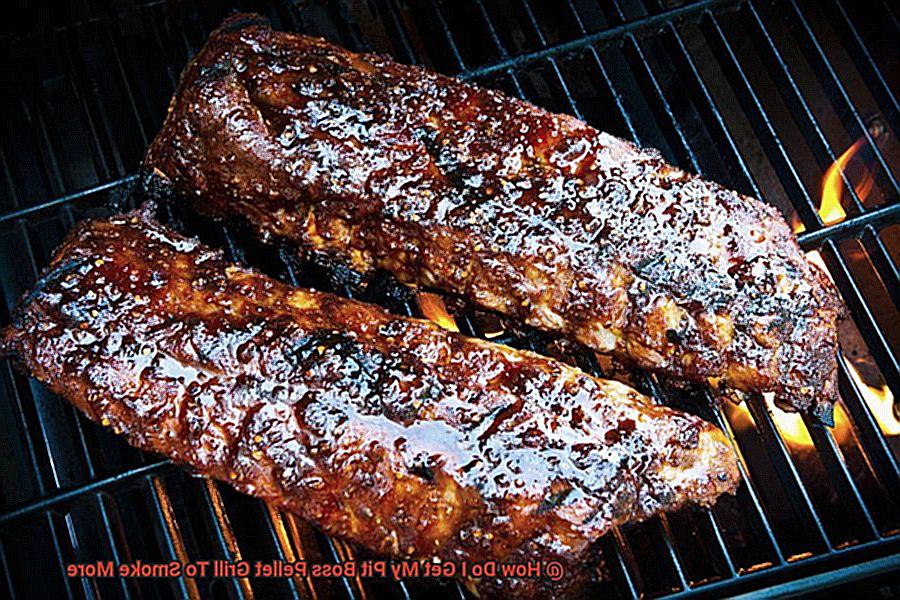
Keep the grill grates and grease tray clean
Grease and food debris can also impede airflow and interfere with smoke production. Use a grill brush or scraper to remove any stuck-on food, then wipe down with a damp cloth or paper towel.
Check and clean the exhaust vent
The exhaust vent allows smoke to escape from the grill, so it’s important to ensure that it’s not clogged or dirty. Use a grill brush or scraper to remove any buildup on the vent, then wipe down with a damp cloth.
Monitor the hopper level
Make sure that there are enough wood pellets in the hopper for the grill to generate smoke. If the hopper runs out of pellets while you’re cooking, this can cause a decrease in smoke production.
Clean the auger and hopper
The auger is responsible for pushing the pellets into the firebox, so it’s important to keep it clean. Use a vacuum or brush to clean any debris that may have accumulated in the hopper or auger.
Temperature Adjustment: How to Lower the Heat for More Smoke
As an expert in temperature adjustment, I’m here to share my knowledge on how to lower the heat for more smoke.
First things first, let’s talk about the ideal smoking temperature. You want to aim for a range of 200-250°F as this allows the wood pellets to smolder and produce that heavenly smoke. If the temperature is too high, the pellets will burn too quickly and produce less smoke. So, it’s important to get the temperature just right.
One way to lower the temperature is by adjusting the airflow on your grill. Close the top vent and adjust the bottom vent to about halfway open. This reduces the amount of oxygen getting to the fire and decreases the heat. It’s a simple solution that can make all the difference.
Another way to lower the temperature is by using fewer pellets. The motorized auger that feeds pellets into the firepot can be adjusted to reduce the feed rate, resulting in less fuel and less heat. Additionally, using a blend of pellets with a higher percentage of flavor wood such as hickory or mesquite can produce more smoke.
But what if you’re still not satisfied with the amount of smoke? Fear not. Adding a smoke tube or box to your grill allows you to add extra wood chips or chunks directly to the fire, increasing the amount of smoke produced. It’s an easy fix that can bring your smoking game to a whole new level.
Remember, smoking is a slow process that requires patience and attention to detail. Resist the urge to rush things by cranking up the heat or overloading your grill with pellets. By adjusting the temperature and using quality wood pellets, you’ll achieve that perfect smoky flavor you’re after on your Pit Boss pellet grill.
Water Pans and Smoker Boxes: Adding Moisture to Enhance Flavor
It’s time to explore the world of water pans and smoker boxes.
Water pans are a simple yet powerful tool that can work wonders when it comes to smoking meat on your Pit Boss pellet grill. By placing a pan filled with water on the grill grates, you create a humid environment that helps regulate the temperature and prevents your meat from drying out. The added moisture also infuses the smoke with more depth and complexity, resulting in an even more flavorful end product.
To get the most out of your water pan, remember to keep an eye on the water level and refill it as needed. The size of your water pan will depend on the size of your grill and the amount of meat you are smoking. It’s worth noting that some Pit Boss pellet grills come with a built-in water pan, so be sure to check your manual before purchasing one separately.
But why stop at just adding moisture when you can also add even more flavor? That’s where smoker boxes come in. These small metal containers can hold wood chips and be placed directly on top of the grill grates or over the flames. As the wood chips heat up, they release smoke into the grill that is infused with moisture from the water in the box. The result is a rich and complex smoke that takes your meat to new heights of flavor.
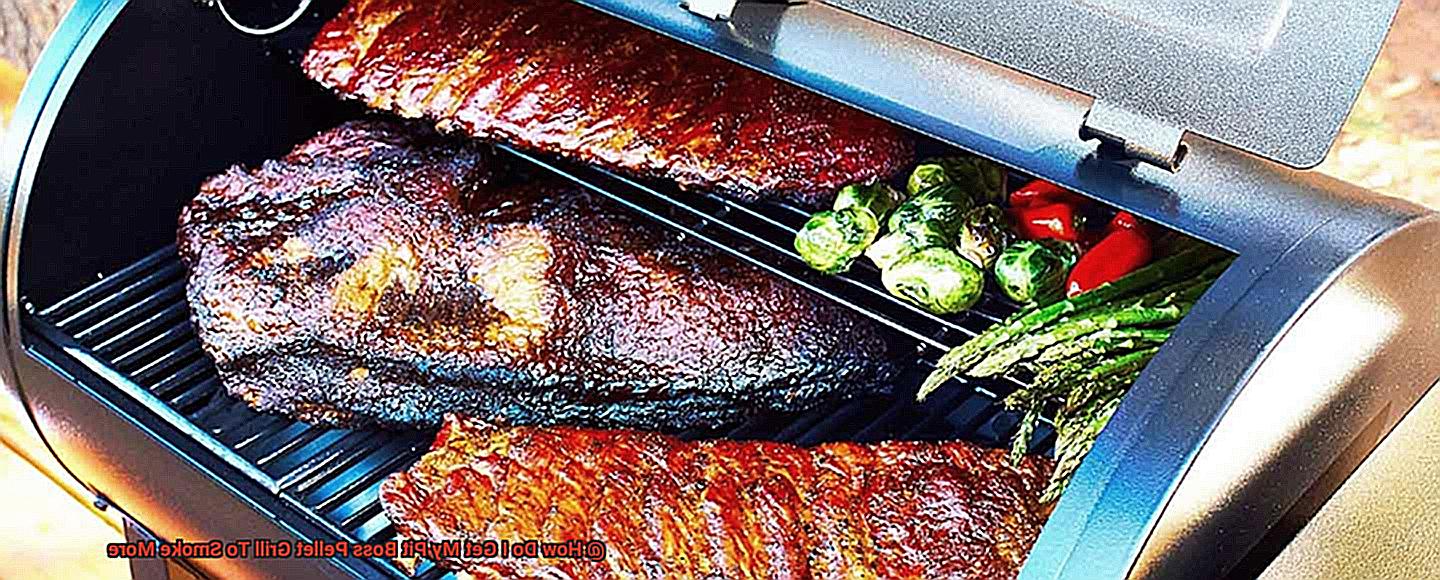
For best results with a smoker box, soak your wood chips in water for at least 30 minutes before using them. This helps prevent them from burning too quickly and ensures that they release smoke slowly and steadily throughout the cooking process.
Experimentation and Testing: Finding the Right Combination of Techniques
If you’re looking to infuse your meats with rich, smoky flavors that will tantalize your taste buds, then experimentation and testing are essential. But how do you find the right combination of techniques to get the most out of your Pit Boss pellet grill?
Firstly, consider using a combination of pellets. While a blend of hickory and mesquite pellets is a popular choice for creating an intense smoky flavor, don’t be afraid to get creative and experiment with different types of wood pellets, like applewood or cherrywood. Each type of wood produces a distinct flavor, so try out various combinations until you find the perfect one for your taste.
In addition, increasing airflow in your grill can also help you produce more smoke. You can do this by opening the vents or adding a fan attachment to create a draft. This will increase the temperature inside the grill and help the pellets burn hotter, resulting in even more smoke.
But don’t forget about temperature. Lower temperatures tend to produce more smoke, so adjusting the temperature settings on your grill may help increase smoke output. For even more smoke production, some pitmasters recommend using a smoke tube or tray filled with wood chips as a supplement.
Remember that finding the right combination of techniques takes time and patience. Keep track of what works and what doesn’t, and make adjustments accordingly. With some experimentation and testing, you’ll soon be able to get your Pit Boss pellet grill producing the ideal amount of smoke for your grilling needs.
Pros and Cons of Producing More Smoke
One way to do so is by producing more smoke on your Pit Boss pellet grill. Smoke not only adds an irresistible depth of flavor to meats, but it also gives them a beautiful caramelized color that’s aesthetically pleasing. However, as with most things in life, there are both pros and cons to consider when producing more smoke.
Let’s start with the pros. First and foremost, smoke enhances the flavor of meats in a way that no other cooking method can. It’s what sets a good BBQ apart from a great one. The low and slow cooking process that comes with producing more smoke can also help tenderize meat and make it more succulent. Plus, let’s not forget about the mouth-watering aroma that fills the air as your food cooks.
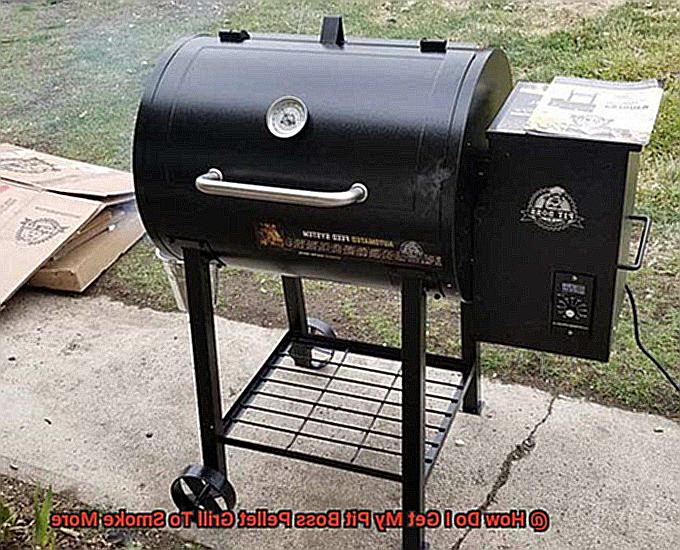
On the other hand, there are some downsides to consider when producing more smoke. Too much smoke can overpower the natural flavors of the meat, making it taste artificial or burnt. Additionally, smoke contains harmful chemicals such as polycyclic aromatic hydrocarbons (PAHs) and benzopyrenes that can pose health risks if consumed in large amounts. And finally, producing too much smoke can cause inconsistent heat, making it difficult to cook food evenly.
So how do you strike a balance? Here are some tips:
- Experiment with different types of pellets to find the perfect flavor for your taste buds.
- Adjust your temperature settings to control the amount of smoke produced.
- Use smoke tubes or trays to regulate the amount of smoke and prevent it from becoming overpowering.
- Keep an eye on your meat and adjust accordingly to avoid burning or undercooking.
Common Mistakes When Increasing Smoke Output
If you’re thinking of turning up the smoke output, it’s important to avoid some common mistakes that can lead to less flavor and more frustration.
Firstly, don’t skimp on pellets. Using too few pellets may sound like a way to increase smoke concentration, but it can actually hinder your grill’s ability to maintain consistent temperature and smoke output. Load up the hopper with plenty of pellets for optimal results.
Secondly, don’t forget to season your grill before use. This crucial step involves heating the grill to high temperatures to burn off any manufacturing residue. Skipping this step can cause a lack of smoke output and flavor in your food, so make sure to give your grill the seasoning it deserves.
Keeping your grill clean is also key in maximizing smoke output. Build-up of grease and debris can inhibit the flow of smoke and heat, resulting in less smoky goodness. So, make sure to clean your grill regularly.
Another common mistake is using wet or damp pellets. These types of pellets take longer to ignite and produce less smoke, which can affect the taste of your food. To avoid this, store your pellets in a dry, cool place to prevent moisture absorption.
Lastly, experiment with different types of pellets to find one that suits your taste preferences. Different woods produce varying levels of smoke and flavor, so try out different options until you find the perfect match.
iGkPPuRVFj8″ >
Conclusion
In conclusion, the key to achieving that mouth-watering smoky flavor on your Pit Boss pellet grill lies in a few crucial factors. First and foremost, choosing quality pellets is essential. Look for 100% hardwood without any fillers or binders, and ensure that they have optimal moisture content, ideal size and shape, and the right wood type for your meat or dish.
But it’s not just about the pellets – keeping your grill clean and well-maintained is equally important. Proper airflow throughout the grill is necessary to achieve consistent smoke output, so make sure you don’t neglect cleaning and maintenance.
Temperature adjustment is also crucial. Aim for a range of 200-250°F to produce that perfect smoky flavor consistently. Adding water pans and smoker boxes can also enhance flavor by adding moisture and depth to the smoke.
Don’t be afraid to experiment with different types of pellets and techniques – it may take time, but finding the perfect combination for your taste buds is worth it.
However, producing more smoke isn’t always better. Striking a balance is important to avoid overpowering natural flavors or posing health risks from harmful chemicals in too much smoke.
Lastly, avoid common mistakes such as using too few pellets or wet pellets that hinder consistent temperature and smoke output.

